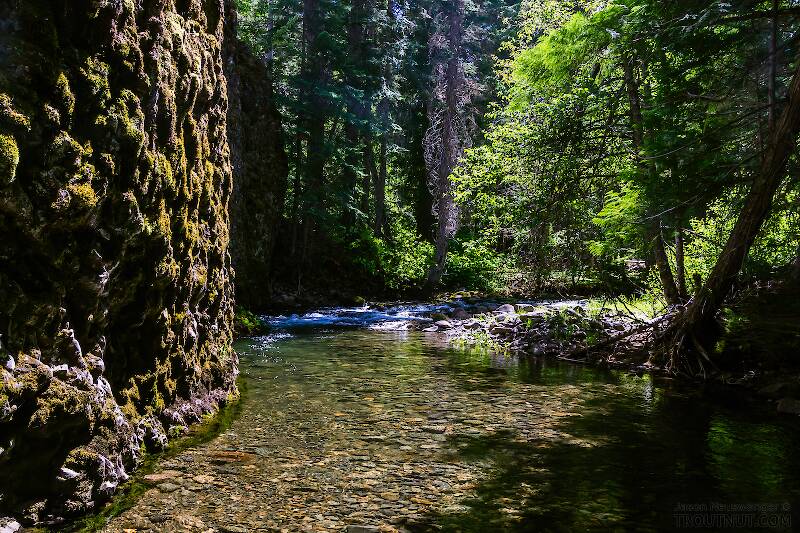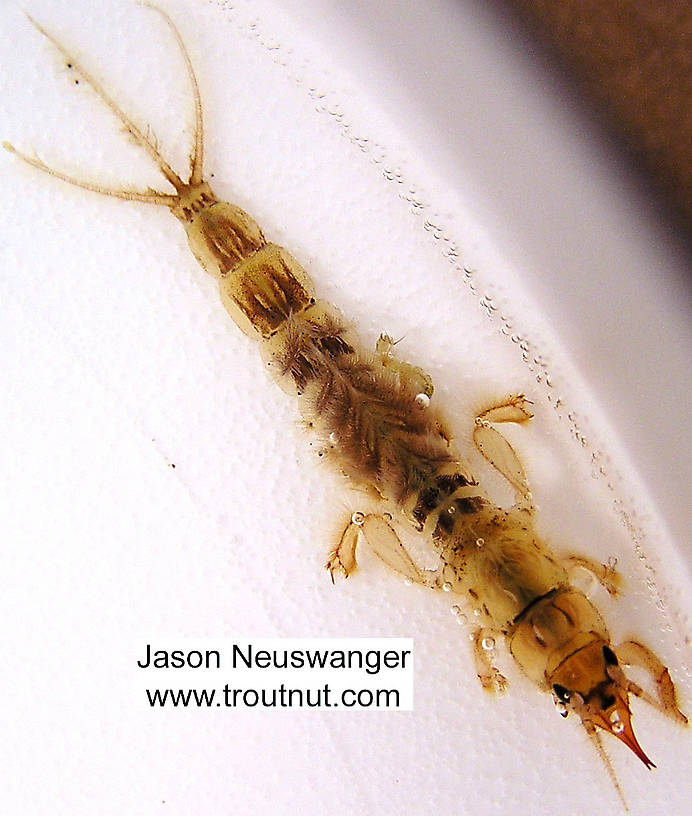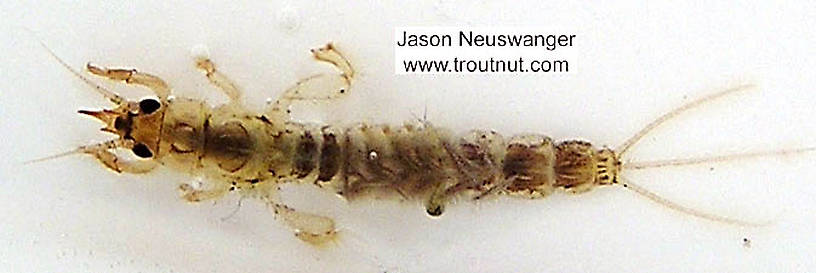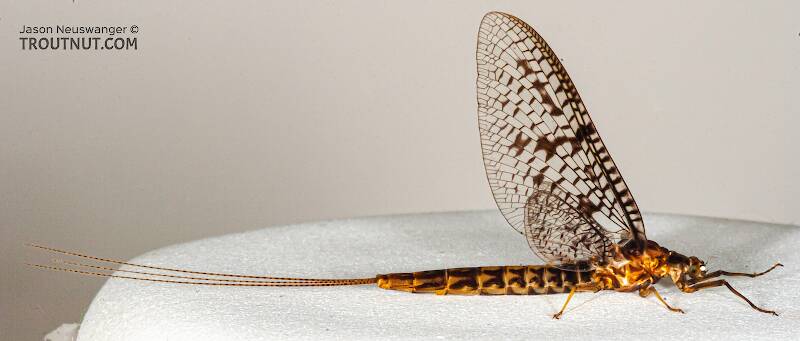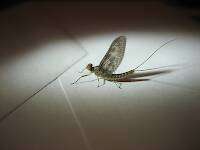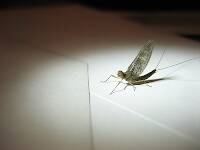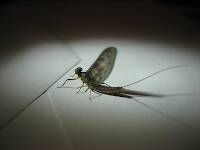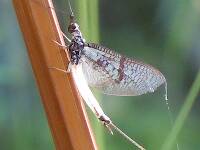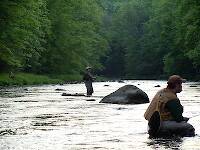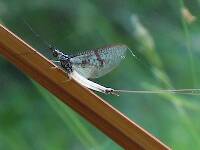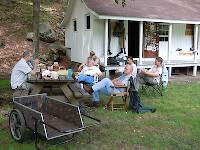
Blue-winged Olives
Baetis
Tiny Baetis mayflies are perhaps the most commonly encountered and imitated by anglers on all American trout streams due to their great abundance, widespread distribution, and trout-friendly emergence habits.
Featured on the forum

Troutnut is a project started in 2003 by salmonid ecologist Jason "Troutnut" Neuswanger to help anglers and
fly tyers unabashedly embrace the entomological side of the sport. Learn more about Troutnut or
support the project for an enhanced experience here.
This topic is about the Mayfly Species Ephemera simulans
The Brown Drakes are a favorite hatch of many in the Midwest, and they make a good showing on localized waters across the country. They are usually the first in a series of big drakes which bring large trout to the surface at twilight and into the early hours of the night. The experience can be much like fishing the Hexagenia limbata hatch, except that the nymphs seem to emerge from slightly more wadeable, sandy bottoms instead of the boot-sucking mud underlying the best Hex water. It will draw big trout out from the depths of a big pool to feed in the shallow tailout after dark.Example specimens
TNEAL on Jun 29, 2011June 29th, 2011, 6:17 pm EDT
For those who haven't seen it, it's hard to imagine... think of spinner falls so heavy that, at times, they actually look like a conveyor belt coming down the main current... trico spinner falls so heavy that they form literal blankets on the water.... the tiny fall olvies so heavy on cold afternoons they resemble a solid belt of sails... the AuSable in Michigan...
Quick Reply
Related Discussions
Topic
Replies
Last Reply
5
Jun 8, 2006
by Wiflyfisher
by Wiflyfisher
6
Jun 10, 2009
by Martinlf
by Martinlf
0
Jul 7, 2008
by Liljrob
by Liljrob

